MegaQuake
The Destructive Power of the Planet
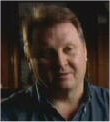 Mega-Thrust
Earthquakes
Mega-Thrust
Earthquakes
Professor Bill McGuire of the Benfield Hazard Research Centre explains that there are subduction zones all around the world, but mainly they occur around the rim of the Pacific. The so-called Ring of Fire. Most of the world’s big, really destructive earthquakes occur here. A subduction zone is where a continental plate is sliding below an adjoining plate causing a build-up of friction. When this friction builds to a critical point, the plate breaks free of the friction and slips. This slippage causes a mega-thrust earthquake.
As most mega-thrust earthquakes occur near, or below, the sea the huge energy release causes a tsunami. A tsunami is different from a normal wave, in that with a normal wave only the surface water is moving, with a tidal wave the whole water column is moving. Millions of tons of water! The combination of massive earthquakes and tsunamis makes subduction zones a deadly geological hazard. So, it should have been a cause for some concern that the Cascadia Subduction Zone, a 600 mile long fault, lies right off the Pacific north-west coast. The strange thing was, that Cascadia didn’t seem to be a danger at all.
For years, scientists have been studying seismic activity along the Cascadia Subduction Zone. They found that, unlike other subduction zones, it was virtually silent. If the adjoining plates were sliding smoothly then no friction would build and no earthquakes would occur. This appears to be backed up by 200 years of records, for as long as Europeans have lived here, there is no record of earthquakes from Cascadia.
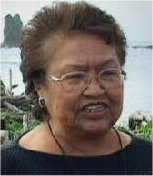 However,
there is another kind of history, the kind that isn’t written down. For
centuries before the Europeans, this land was home to native peoples.
Viola Riebe is a member of the Ho Nation on the northern Washington
coast. As a child, she remembers being told the legend of the
thunderbird. The thunderbird lives at the head of the Ho river, and when
he comes out, the ground shakes and the water is troubled. Could this
story be describing a real event? Could this have been a mega-thrust earthquake
of long ago?
However,
there is another kind of history, the kind that isn’t written down. For
centuries before the Europeans, this land was home to native peoples.
Viola Riebe is a member of the Ho Nation on the northern Washington
coast. As a child, she remembers being told the legend of the
thunderbird. The thunderbird lives at the head of the Ho river, and when
he comes out, the ground shakes and the water is troubled. Could this
story be describing a real event? Could this have been a mega-thrust earthquake
of long ago?
Most geologists have no time for such speculation, but one decided to take a closer look.
Brian Atwater of the United States Geological Survey took his canoe and began exploring the marshes and rivers of the Washington coast. He was hoping that the layers of mud here, laid down over centuries, might provide a clue to events of the past.
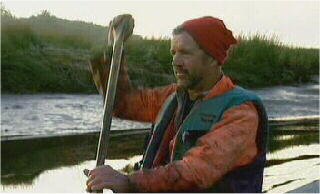
Brian Atwell
Digging down through the layers of mud, Brian discovered evidence of the existence of a Spruce forest suggesting that at some time in the past, the land had been higher and had dropped to allow water to flood the forest. Above the spruce layer was sand, and since there is no sand in this locality, there must have been a sudden inrush of sea-water to transport the sand. This was no gradual change in land level, it must have been a violent collapse. The most likely explanation is a large earthquake causing the land to subside, and a warping of the sea floor to trigger a tsunami to flood the forest and bring in the sand.
Carbon dating of the buried trees showed that this event occurred roughly 300 years ago, before Europeans arrived. So the native legends may indeed be about a real event. This evidence alone, does not prove an earthquake. If a mega thrust earthquake had happened in Cascadia it would have produced a tsunami capable of travelling right across the Pacific, to countries like Japan.
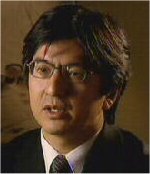 When
Dr. Kenji Satake, of the Geological Survey of Japan, heard about
Atwater’s theory he realised that Japan could hold the answer. He
explained that while 300 years ago is pre-history for America, Japan has
written records of seismic events dating back to this time. What Satake
was looking for was a special kind of tsunami. Most tsunamis to hit
Japan are caused by nearby earthquakes so they are accompanied by
shaking of the ground, but a few tsunamis arrive without shaking because
the parent earthquake is far away. When there is no known earthquake
that could have caused the wave, it is called an orphan tsunami. In the
coastal town of Neho, he finds a document describing just such a tsunami
dated 28 Jan 1700. Crucially, the same tsunami was recorded in four
other locations in Japan.
When
Dr. Kenji Satake, of the Geological Survey of Japan, heard about
Atwater’s theory he realised that Japan could hold the answer. He
explained that while 300 years ago is pre-history for America, Japan has
written records of seismic events dating back to this time. What Satake
was looking for was a special kind of tsunami. Most tsunamis to hit
Japan are caused by nearby earthquakes so they are accompanied by
shaking of the ground, but a few tsunamis arrive without shaking because
the parent earthquake is far away. When there is no known earthquake
that could have caused the wave, it is called an orphan tsunami. In the
coastal town of Neho, he finds a document describing just such a tsunami
dated 28 Jan 1700. Crucially, the same tsunami was recorded in four
other locations in Japan.
The final piece of evidence would be found in a mysterious corner of the Pacific north-west. 100 mile south of Seattle in a remote area of the Washington coast is the ghost forest. These are trees which died hundreds of years ago but remain standing to this day. What could kill a forest of Red Cedar trees along 60 miles of Washington coast?
Tree Specialist David Yamaguchi of the University of Washington has spent years looking at the trees and by analysing the tree rings he found that all of the trees died in the early months of 1700.
There was now no doubt that the same catastrophe that had killed the ghost forest had also sent the tsunami across to Japan. And from the Japanese records Kenji Satake could work out exactly when it had happened. On the 26th January, 1700, at nine pm. On that winter’s night a megathrust earthquake, just like the Boxing Day earthquake of 2004, struck the Pacific Northwest. It drowned forests and turned land in to sea. It sent a tsunami hurtling across the Pacific. And it spawned a legend that would be passed down to a dozen generations. The scientists knew that if it happened here once it would happen again. One day the people of the Pacific Northwest will face a megathrust earthquake. So how big will it be? What damage will it cause? And when will it happen? The first question is how large will the earthquake be. The power of an earthquake depends on the size of the fault that breaks. In the case of the Boxing Day earthquake it was huge. Over six hundred miles of fault ruptured. The Cascadia subduction zone is almost exactly the same length. So it’s likely that it will create an equally powerful earthquake.
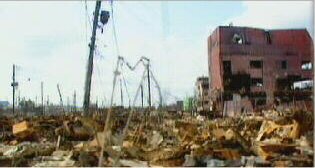
Kobe earthquake Aftermath
Scientists believe the next Cascadia earthquake will be one of the largest on the planet, up to magnitude 9.0. The Kobe earthquake, which killed six thousand people and devastated the Japanese economy, was a magnitude 6.8. The terrible Mexico City earthquake which killed over 10,000 people was 8.1. But, a magnitude 9.0 releases many times more energy than those.
Tim Walsh of the Washington State Geological Survey explains "The magnitude scale is logarithmic, that is each one is ten times bigger than the previous number, but that’s the amount of displacement. When you do that in terms of energy release each one is thirty to forty times bigger than the previous one. So a magnitude nine, has a thousand times more energy release than does a magnitude seven."
Fortunately the big cities of the Pacific north-west are some way inland, but many people live in the coastal regions and the beaches are a big tourist draw in the summer. So there will still be many thousands of people at risk from a Cascadia tsunami but, far more people will be affected by the earthquake itself. So Washington, Oregon and British Columbia will experience strong ground shaking which may last as long as five minutes.
So what damage will several minutes of shaking do to cities like Seattle? Even though the Boxing Day earthquake and the next Cascadia earthquake may be very similar they could have very different effects. In Indonesia most of the damage was caused by the tsunami not the earthquake itself.
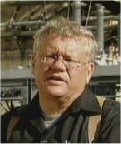 Professor
Tom Heaton of the California Institute of Technology voices his
concerns: "My theory is that in a Cascadia event these buildings
may sway some large distance and as we get a very long duration of
shaking that the swaying may grow in intensity and the buildings may
begin to be damaged." But not everyone agrees. John Hooper is a
buildings engineer who has worked on many of Seattle’s tallest
buildings. He believes that the modern skyscrapers at least should be
strong enough to avoid serious damage.
Professor
Tom Heaton of the California Institute of Technology voices his
concerns: "My theory is that in a Cascadia event these buildings
may sway some large distance and as we get a very long duration of
shaking that the swaying may grow in intensity and the buildings may
begin to be damaged." But not everyone agrees. John Hooper is a
buildings engineer who has worked on many of Seattle’s tallest
buildings. He believes that the modern skyscrapers at least should be
strong enough to avoid serious damage.
The reality is no one knows for sure. Because there has never been a megathrust earthquake near a modern high rise city. But there is a type of building that everyone agrees will be at risk. The older un-reinforced brick buildings.
The next megathrust earthquake may not happen for centuries, or it could be imminent. No one knows. We don’t know whether the entire Cascadia fault will rupture like it did in 1700. We don’t know how badly affected the modern cities will be. But Yumei Wang, director of Geo Hazards for Oregon, believes we must still take action. He says "We know that a Cascadia earthquake is inevitable, we can’t prevent earthquakes, but one thing that we can do is prevent a lot of the damage. We can save lives if we prepare now."